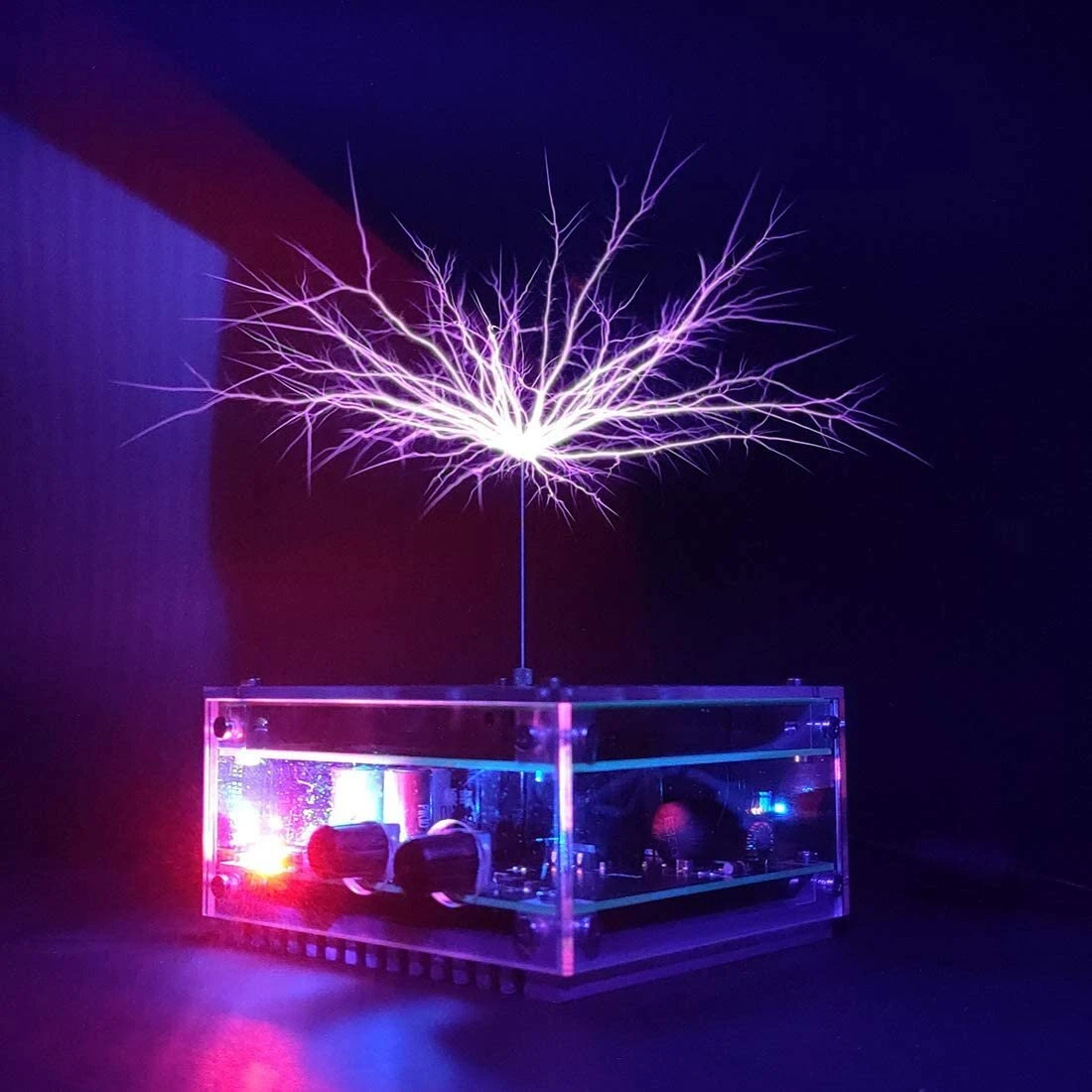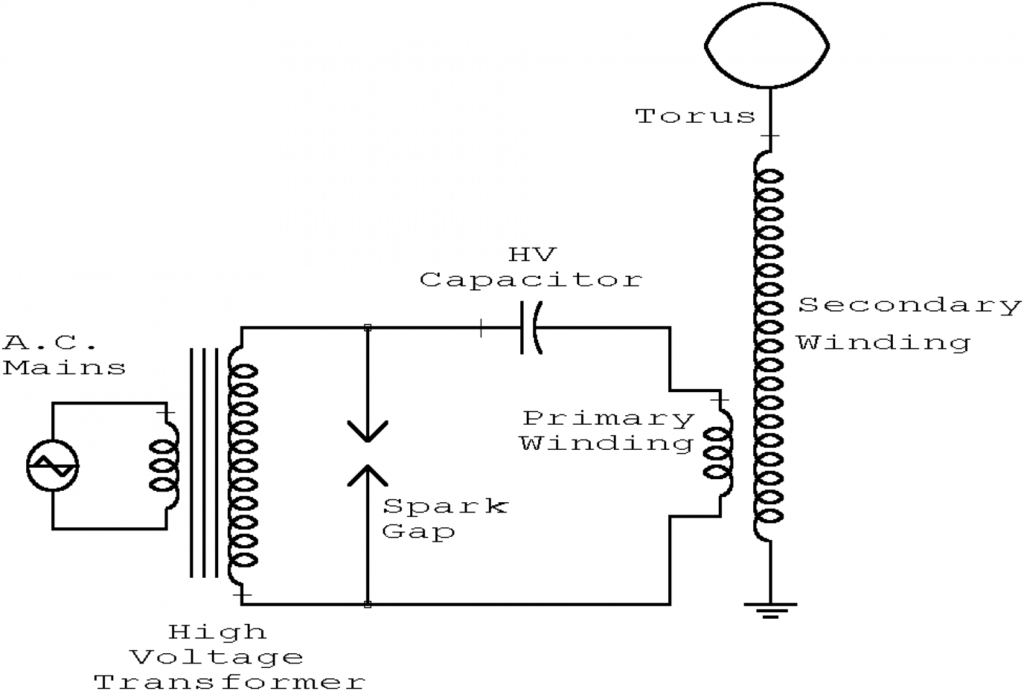
Tesla Coil
The Tesla coil is a device that uses two coils to generate high-voltage at the terminals of the secondary capacitor. That high voltage then causes electrons to flow between the terminals of that capacitor producing sparks.
Components:
- power supply
- primary condenser
- primary coil
- spark gap
- secondary coil
- secondary condenser
A Tesla coil is made up of two pieces, each with its own capacitor: a primary coil and a secondary coil. (Like batteries, capacitors store electrical energy.) A spark gap – a space of air between two electrodes — on the first circuit connects the coil and the capacitor.
A spark gap’s goal is to produce a large amount of very high-frequency electrical noise (as well as acoustic noise, but that’s a side effect). The Tesla coil itself is a resonant radio-frequency transformer that extracts power from the noise generated by the spark gap at the frequencies it can use (i.e. where it resonates), leaving the remainder to cause broadband interference for nearby radio and television sets and other electronic equipment.
Actual transmitters (designed for that purpose) were also built employing spark gaps in the early days of radio.
It resembles a typical transformer in appearance, but it operates in a different manner. It has a very loose coupling between the primary and secondary coils, and the majority of the voltage gain comes from resonance rather than the turns ratio. A typical transformer has an iron core that allows it to work at low frequencies, whereas the Tesla Coil has an air core that allows it to run at much higher frequencies efficiently.

Working Principle
The primary coil is connected to the power supply. The capacitor in the primary coil absorbs the charge like a sponge. Because the primary coil must resist the tremendous charge and huge surges of current, it is commonly composed of copper, which is a good conductor of electricity. The capacitor eventually accumulates enough charge to overcome the air resistance in the spark gap. The current then flows out of the capacitor along the primary coil, creating a magnetic field, comparable to squeezing water out of a sponge.
The tremendous quantity of energy causes the magnetic field to collapse rapidly, causing an electric current to flow through the secondary coil. Sparks are created in the spark gap. Several hundred times each second, energy sloshes back and forth between the two coils, building up in the secondary coil and capacitor. The charge in the secondary capacitor eventually builds up to the point where it bursts open in a dramatic blast of electric current.
With no electrical wire connection, the resulting high-frequency voltage can illuminate fluorescent lamps from many feet distant.
When the secondary coil reaches its full charge in a well-designed Tesla coil, the entire process should restart and the device should become self-sustaining. This, however, does not occur in practise. Because the hot air in the spark gap pulls some electricity away from the secondary coil and back into the gap, the Tesla coil will ultimately run out of power. This is why the coil must be powered from a separate source.
The Tesla coil is designed to achieve a phenomenon known as resonance. When the primary coil fires the current into the secondary coil at precisely the appropriate time, the energy transmitted into the secondary coil is maximised. Consider it like knowing when to push someone on a swing to get it to go as high as possible.
Setting up a Tesla coil with a rotary spark gap that can be adjusted provides the user more control over the voltage of the current it generates. This is how coils may produce bizarre lightning displays and even play music in time with current bursts.
While the Tesla coil no longer has any practical applicability, Tesla’s innovation dramatically changed the way people thought about and used electricity. Tesla coils are still used in radios and televisions today.
Note: In a solid state tesla coil the DC supply is switched into the primary LC circuit. It’s essentially a large, resonant inverter with a high frequency. The rest of the cycle operates similarly to the spark gap coil, with the exception that the primary current rings up rather than down during the cycle. The procedure is halted after a predetermined number of cycles to prevent damage to the components.
Instructions:
- Power up the circuit
- You should see sparks at the tip of the secondary capacitor.
- Hold a fluorescent lamp near the capacitor and see what happens
Links:
BNC Tesla elétrica de alta frequência ARC Music Tesla Coil com fonte de alimentação 60V 3A
Wireless Electricity? How the Tesla Coil Works